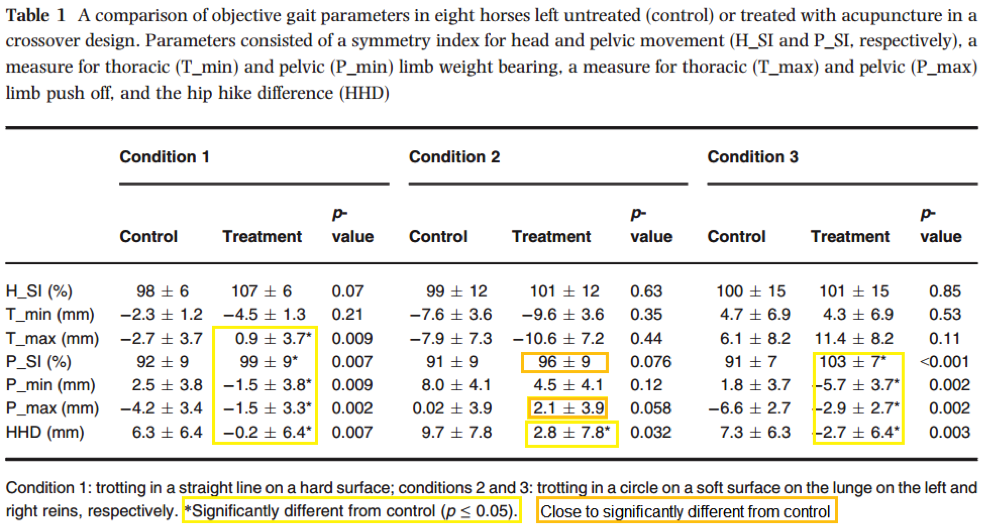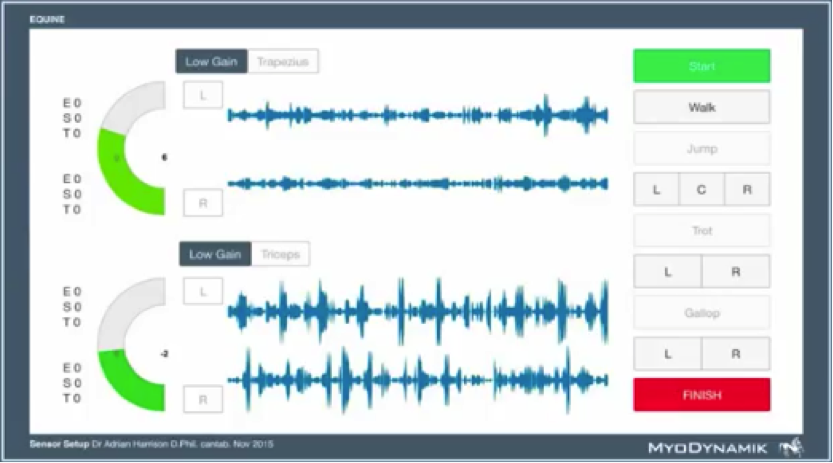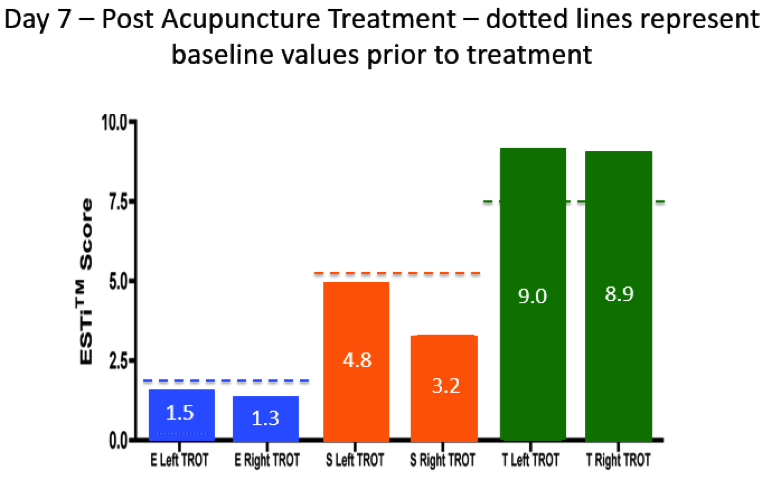The application of acoustic myograpy as a non-invasive diagnostic tool for muscle-related pain monitoring in horses and it’s application
Introduction
As most clinical studies have documented, increase in age can result in an increase in musculoskeletal and chronic pains. To supplement these affirmations, experimental data are various, suggesting that pain sensitivity can increase, decrease or remain unchanged over the individuals life spam. These results may be explained by metrological differences, like age distribution, size and sex.
Most of the findings from the article studied is that pressure pain thresholds appear to decrease with age whereas heat pain thresholds remain unchanged. Additionally, there is no age relation in regards to spatial summation of heat and pressure pain. Furthermore, temporal summation of heat pain is increased with age whereas pressure pain shows no age effect. This temporal summation increase can become an inconvenience at some point, and ways are trying to be found to increase the temporal summation of heat pains.
In 2000, Thomas Graven-Nielsen and colleagues published results in the scientific journal “Pain”, which showed that ketamine reduces muscle pain and also reduces temporal summation in fibromyalgia patients. The study shows that Ketamine has no significant effect on the pain threshold to single electrical stimulation though. However, the time between the pain threshold to single and repeated stimuli was significantly decreased by the ketamine showing an effect on temporal summation. It also shows that the pressure pain tolerance from tendons in muscles was increased by ketamine. The conclusion shows that mechanisms involved in referred pain, temporal summation, muscular hyperalgesia, and muscle pain at rest were effected by ketamine in fibromyalgia patients.
More ever, they mentioned also the natural treatment for pain relieving effect by using acupuncture treatment could be an alternative.
Acupuncture is an old medicinal treatment that only recent studies show how there is an effect on the animals’ medical treatment, concerning muscle pains mainly, especially on horses.
By inserting 11 needles to different points in the horse’s body and doing several experiments using an acoustic myography device, that checks muscles sounds, we could see the changes and the effects on the balance, temporal summation and pain, as similar to the effects of ketamine, which gives a natural alternative solution to a chemical drug with potential side effects (heart problems…).
Acupuncture effect of horses’ muscles and symmetricity
Acupuncture is an extremely old medicinal science, discovered and used for more than a thousand years by the Chinese people, and it is part of their traditional medicine. This medicinal treatment has always been used on humans, but rarely on animals, due to the lack of knowledge mankind has on animals’ anatomy compared to humans anatomy, but also due to a lack of interest.
However, due to recent studies, we found that Acupuncture could be used on animals, with quite good results. Indeed, Acupuncture has been proved to treat endometriosis in humans, so why couldn’t it treat simple muscle pains in animals? Our study being mainly on horses, we studied an article focusing on horses being treated by acupuncture to improve their objective and subjective gait parameters.
The experiment was developed on 2 groups of 4 horses, composed of two Irish Sports horses, two ponies and four trotters (two geldings and six mares) with a mean standard deviation age of 14.8 +/-5.3 years, “unshod, not regularly exercised and lived out on pasture year round. Any horse that was sound or mildly lame [≤2/10 on the lameness scale devised by Wyn Jones (1988)] on baseline evaluation was included in the study, but obviously lame horses (lameness score of >2/10) were excluded.” The observations on this lameness scale would permit a study of the subjective gait.
One group would be the observation group, the other one treated by acupuncture. The two groups were reversed after 12 weeks. Two veterinarians specialized in acupuncture took care of the horses. The acupuncture points pressed and worked on were decided by the veterinarian treating the horse by palpation and pain sensation from the horse, with a maximum of 10 points plus an additional point, “Bai-hui,[…] located at the level of the lumbosacral space (Fleming 2001), was treated in every horse by prior agreement.” The 11 point rule was decided because a lot of experts determined that more points diminishes the effects of acupuncture medicine. The treatment lasted 8 days, with three treatments on that period, where both gaits were studied before and after treatment, as well as 1, 4 and 7 days after the end of the treatments.
These horses were exercised in three separate exercises, consisting on a trot in a straight line on a hard surface, and on the lunge on the left (2) and right (3) reins on a soft surface. Recordings were made using inertial sensors for the objective gait, and the subjective gait analysis was made by two board-certified surgeons who reviewed video-recordings. The point of the experiment was to see if the gait could become more symmetrical, which would mean less pain and discomfort from the horses. The head, forelimb and pelvic/hind limb region were studied.
Results:
The results were positive but not totally conclusive. Indeed, the gait’s symmetricity was improved on the hind limb and pelvic regions, as you can see on the table (yellow and gold contouring), but the forelimb showed mild results, only working under exercise 1 and 3, and the results were quite inconsistent on the head (results should be close to 100), only working on exercise 2.
The overall gait’s symmetricity was improved, as well as the lameness of the treated horses, thought the study of the subjective gait, with an improvement of 51% (OR 0.51, 95% CI 0.34–0.78; p = 0.002), even though the global score didn’t change (OR 0.53, 95% CI 0.24–1.10; p = 0.12).

(Diagram taken from Bettina Dunkel, Thilo Pfau, Andrew Fiske-Jackson, Kata O Veres-Nyeki, Harriet Fairhurst, Katrina Jackson, Yu-Mei Chang & David M Bolt (2016). A pilot study of the effects of acupuncture treatment on objective and subjective gait parameters in horses. Veterinary Anaesthesia and Analgesia.)
The main issues brought up by this test were mainly due to the mild results from the experiment. The reasons brought up by this article were that the study groups were too small, the treatments weren’t applied for a long enough period of time, and one possible issue was that the acupuncture needles were maybe misplaced, due to our mild knowledge on horse acupuncture, just as they said in their conclusion; “The anatomical landmarks describing the locations of acupuncture points are sometimes vague and decisions on which and how many points to treat are usually based on the subjective assessment and personal beliefs of the acupuncturist. The lack of a good control procedure and difficulties in finding objective methods with which to evaluate the (often subtle) treatment effects further complicate the design of studies.”
However, recent studies and breakthrough could counter this problem, especially the CURO device, a new machine that could greatly help the advance and use of acupuncture medicine on animals.
CURO device and how it works
For many years we have known that skeletal muscles vibrate when they contract. This is especially obvious when we are cold and start to shiver, but also when we are physically tired and fatigued. Only recently it has become possible to successfully record muscle sound during physical activity. This is a technique generally referred to as acoustic myography.
The Danish company, Myodynamiks is the first to develop a useful acoustic myography unit- the so-called CURO. The CURO device makes it possible to directly record but also enables to follow muscle sound in real time via WIFI link, a specific app and an iPad.
“Bioimpedance is used as a measureable source of muscle tension including viscoelastic tone, physiological contracture, voluntary contraction, and muscle spasm. If these are left untreated, this can over a period of time lead to clinical pain as a direct result of increased myofascia tension. (Harrison, Adrian et. Al. multi-frequency bioimpedance and myofascial release therapy: an equine “Aatlasorange1” validation study, Denmark 2015).
Bioimpedance analysis (BIA) uses components of impedance (Z), resistance (R) and reactance (Xc) which delay the passage of the current through the cell membranes and tissue interfaces. Resistance is related to the fluid content and Xc indicates the mass, function and interface of the cell membrane. With this, BIA makes it possible to detect characterization or classification of relative changes in hydration and cell health/damage in a non-invasive fashion (Nescorlarde et al., 2013).”
The voluntary movements start with a trigger in the prefrontal cortex, movement planning in the basal nuclei, sequence modulation in the Thalamus, fine-tuning in the cerebellum and adjustment for posture in the brain stem. Although this sequence of events seems complex, the CNS only actually controls three parameters when it comes to skeletal muscle contraction. The CNS controls the muscle contraction efficiency/synchronization, it determines how many fibers should contract (spatial summation) and finally the rate of how active fibers are to be excited (temporal summation). These three parameters have been combined by Myodynamiks as an ESTi score. This makes it possible for veterinarians to an immediate assessment of muscle contractions as it happens.
The CURO app displays in real time the muscle sounds of the chosen muscles. These muscle sounds shown as a constant stream of spikes colored in blue on the picture below. They are presented for both the left and the right side of the horse. To the left in the picture below two semicircles with a number by the side. This represents an ESTi balance score allowing the user to immediately see if the left and the right side of the horse is in or out of balance. To the far left, and ESTi score is in place. The score of 10 being optimal, and the score of 1 being poor. (Webinar by Dr. Adrian P. Harrison)

(picture from myodynamik.com)
Not only does the CURO device makes it possible to measure which muscles is injured, but also enables the veterinarian to follow the recovery of the horse and by this carefully make a plan for the re-training of the horse. Furthermore, the device can be applied to both rider and horse, to see whether the rider and horse is out of balance during exercise. A rider out of balance can become the cause of recurrent back pain in horses.
So how to apply the CURO system
Sensor setup
First we select the muscles of interest, up to 4 muscles (2 per side) is possible. The acoustic transmission gel is rubbed into the horses skin (The horses fur shouldn’t be too long). The muscle sensor is placed on the gel and tape into place. Then the muscles sensors are connected to the AMG unit. The AMG is switched on and we are ready.”
A combination of AMG and BIA is an optimal way of determining muscle injury and experiments have shown that these methods can enhance the chances of subsequent recovery during rehabilitation of an injured horse. When the injured muscle(s) has been detected by one or both methods, it is now possible to consider what kind of treatment is needed. One of these methods could be acupuncture, which was studied by the team that invented the CURO machine.
Indeed, thanks to a study presented in a video on the myodynamik.com website, a test experiment with acupuncture was made.
Acupuncture and CURO system test
The test was made on 6 horses, and the acupuncture points where pressed during 10 minutes, with specially concentrating on the musculus gluteus medius.
Recordings were made on the muscle, before the treatment, after it, then 2 and 7 days after that same treatment. The first measure was used as a baseline, and in helped to record efficiency, spatial and temporal summation of pain in the muscle.
The positive result given by the test concerns the temporal summation. Indeed, throughout the tests, you could see an increase of the temporal summation, even after the seventh day, effects that were similar to the ones where ketamine was used to treat patients, with a pain block effect and better temporal summation.
The other results given by the test show that, until after day 2 post treatment, the efficiency and the spatial summation were over the baseline, but then they dropped under the baseline on the recording of the seventh day. That indicates that there was a greater fiber recruitment, and so a poor efficiency and coordination. However, the hypothesis for this decrease suggests that the treatment wasn’t fully adapted and should have been effected on a longer period of time, and we know that, thanks to the previous article on acupuncture, coordination can indeed be increased by acupuncture, especially on the hind limb.

Summary:
As we saw, the use of a natural traditional old medicine like Acupuncture and a new noninvasive device using Acoustic Myography give similar, or even better, results regarding pain, temporal summation and balance between muscles from a ketamine treatment.
This type of treatment could, when a treatment is needed, be chosen with time as a frequent solution by veterinarians if the results keep being encouraging and productive.
The reason this treatment could replace ketamine is that the use of ketamine has been known for long time in medicine and brings good results, but this drug has several side effects, like cardiovascular problems, gastrointestinal and et, side effects not noticed with acupuncture.
This method could also be used to improve the pain temporal summation in elderly animals, because we saw this was one of the main issues with age, unlike electrical current nor pressure pain.
References:
1. Stefan Lautenbacher, Miriam Kunz, Peter Strate, Jesper Nielsen, Lars Arendt-Nielsen (2005). Age effects on pain thresholds, temporal summation and spatial summation of heat and pressure pain. Pain 115 410–418
2. Thomas Graven-Nielsen,Sally Aspegren Kendall, Karl G. Henriksso , Mats Bengtsson, Jan SoÈrensen, Anders Johnson, BjoÈrn Gerdle, Lars Arendt-Nielsen (2000). Ketamine reduces muscle pain, temporal summation, and referred pain in bromyalgia patient. Pain 85 483±491
3. Irene Lund, Thomas Lundeberg (24th March 2016). Is acupuncture effective in the treatment of pain in endometriosis? Journal Of Pain Research.
4. Bettina Dunkel, Thilo Pfau, Andrew Fiske-Jackson, Kata O Veres-Nyeki, Harriet Fairhurst, Katrina Jackson, Yu-Mei Chang & David M Bolt (2016). A pilot study of the effects of acupuncture treatment on objective and subjective gait parameters in horses. Veterinary Anaesthesia and Analgesia.
5. Teresa Paolucci,vincenzo Maria Saraceni,Giulia Piccinini (1st April 2016). Management of chronic pain in osteoporosis: challenges and solutions. Journal of Pain Research.
6. Harrison, Adrian et. Al. (2015) multi-frequency bioimpedance and myofascial release therapy: an equine “Aatlasorange1” validation study, Denmark.
7. The Curo System, ACOUSTIC MYOGRAPHY the CURO and ESTiTM Score (2015), Video 1 http://myodynamik.com/video
8. The Curo System, Acupuncture and the Curo System (2015), Video 2 http://myodynamik.com/video
